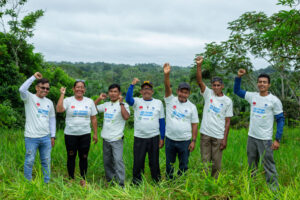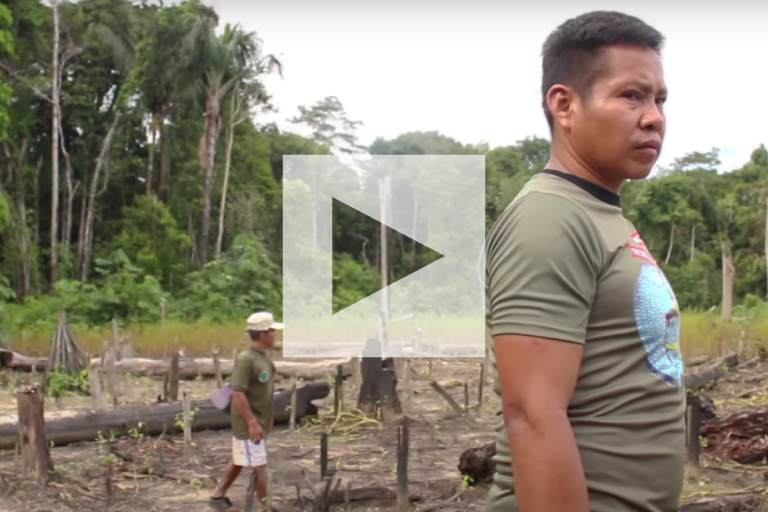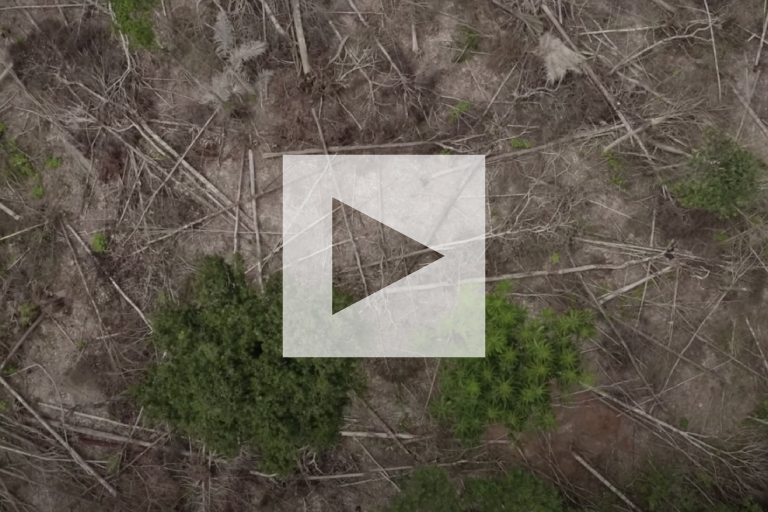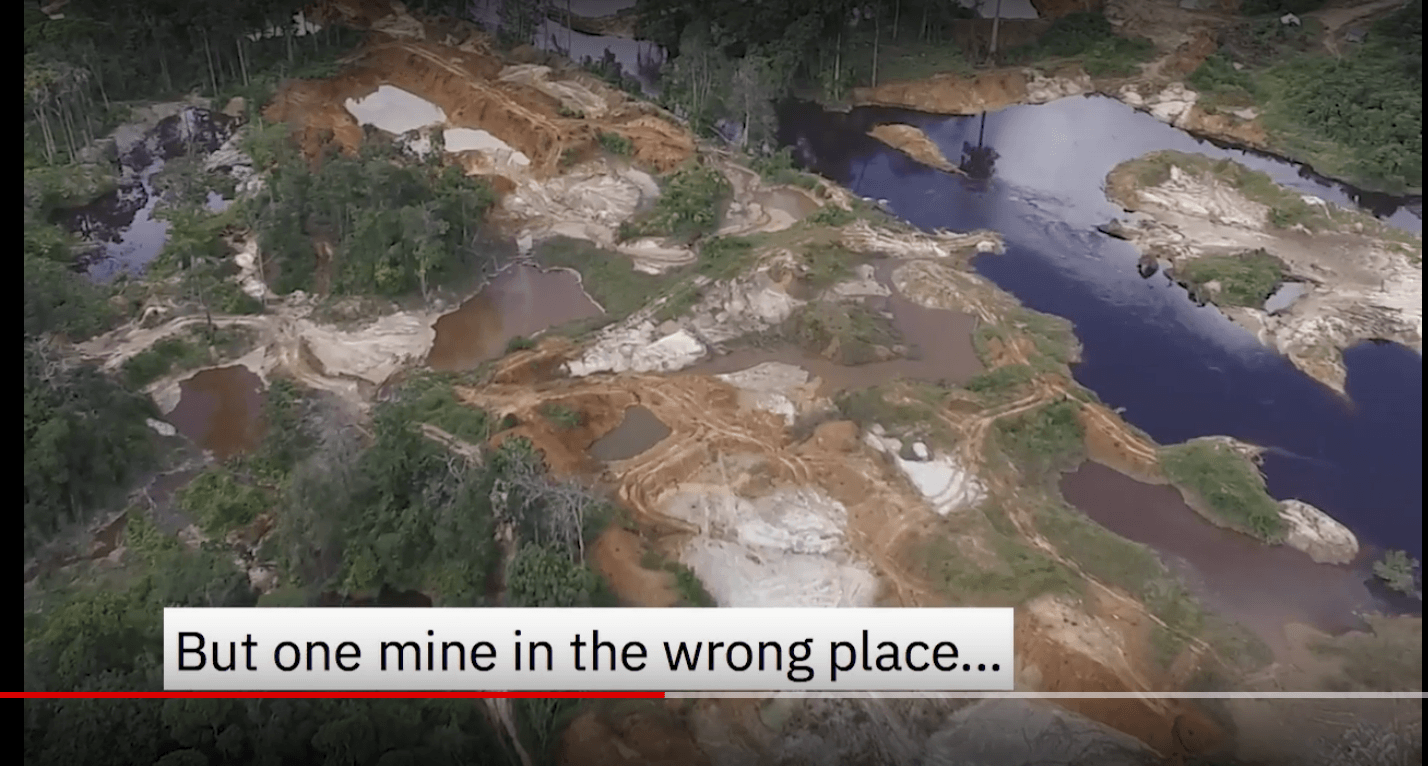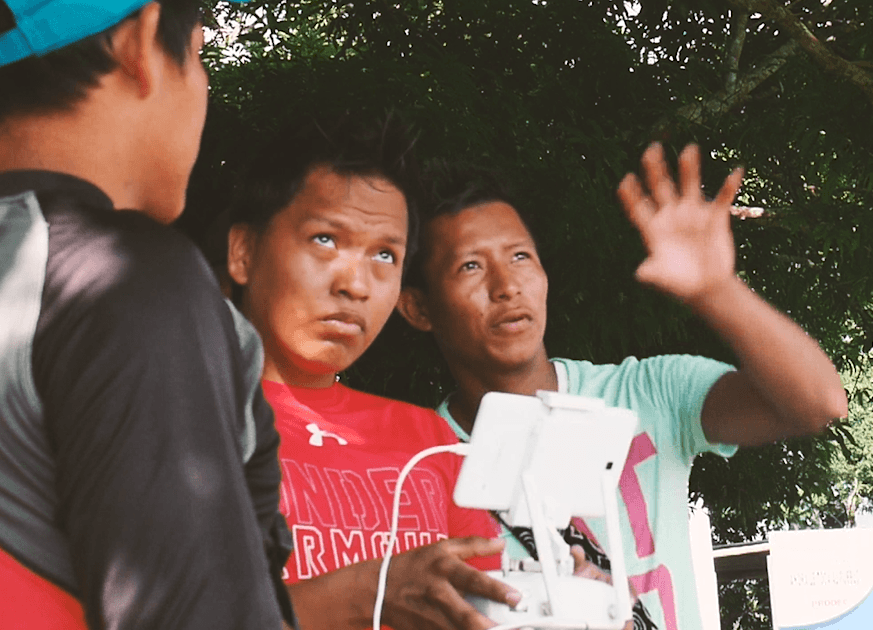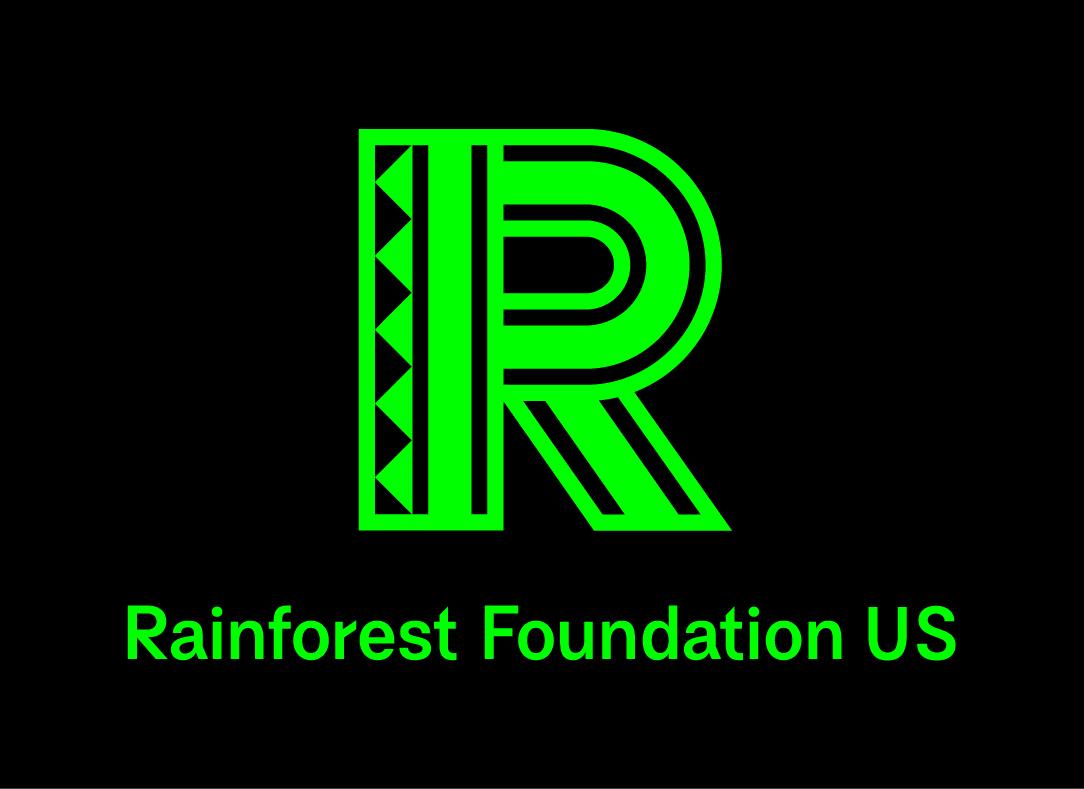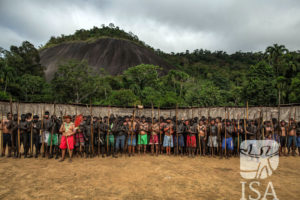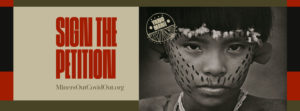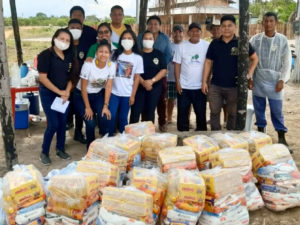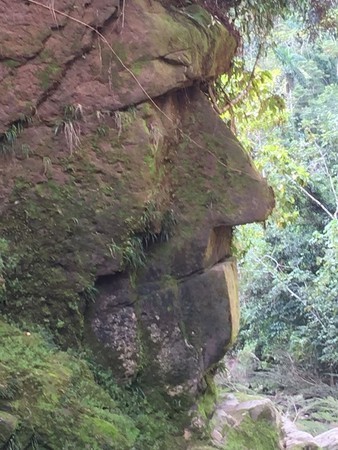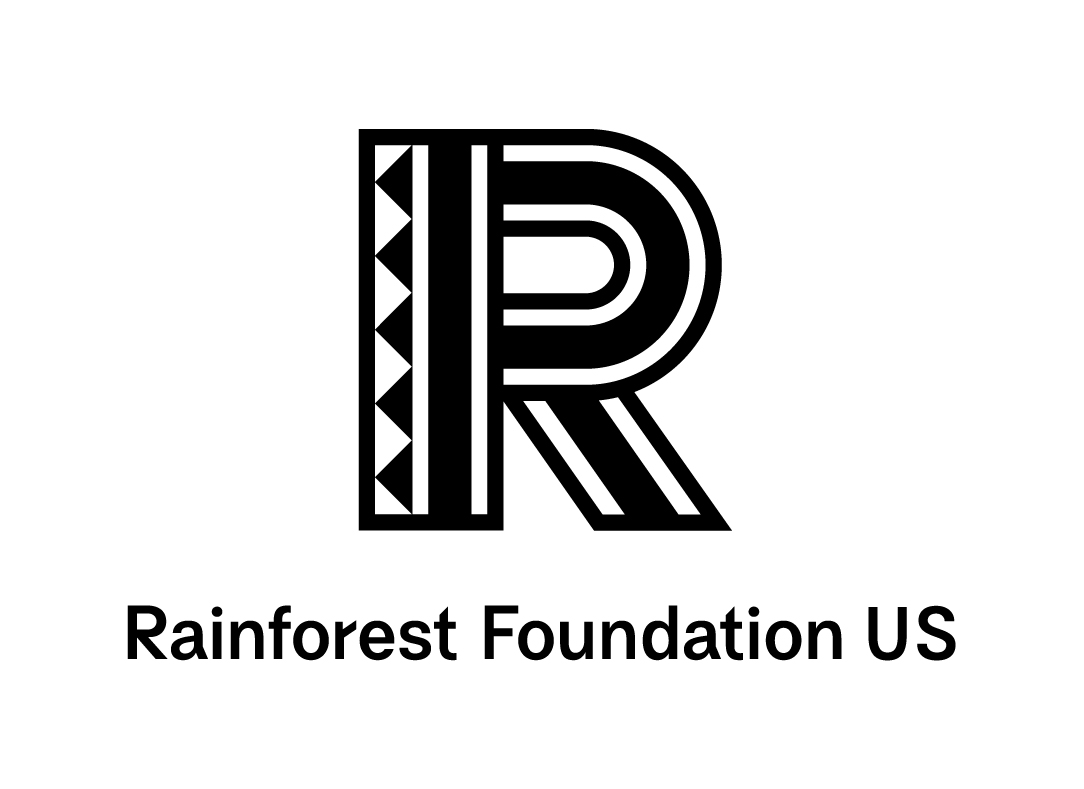“The Reunion”, a film produced by Rainforest Foundation US (RFUS) and Handcrafted Films, follows the indigenous Harakbut people as they search for an enormous stone face, the Rostro Harakbut, deep in the Peruvian Amazon. The Rostro, part of the Harakbut’s mythology, had been lost for centuries. “The Reunion” captures the rediscovery of the lost monument.
In October 2014, RFUS, Handcrafted Films, and the Executor of the Administrative Contract of the Amarakaeri Communal Reserve (ECA-RCA) carried out an expedition deep into the Harakbut ancestral forest—now the Amarakaeri Communal Reserve—to search for the Rostro Harakbut. The Rostro had never been documented before. The Harakbut people hope its rediscovery will help prevent gold and oil exploration in their territory.
The Amarakaeri Reserve and the Harakbut communities that surround the Rostro are under intense pressure from illegal gold mining—which has ravaged thousands of hectares along the Reserve’s border—and from natural gas extraction set to take place in the heart of the Reserve.
Extractive activities not only threaten the environment, but also Harakbut culture; many youth are drawn to the gold industry’s promise of quick money, luring them away from the environmentally sustainable customs of their indigenous ancestors—customs that have protected the Reserve’s biodiversity for centuries.
In order to recuperate and maintain the customary connection that the Harakbut have with the Reserve, community leaders Jaime Corisepa and Luis Tayori are carrying out cultural mapping of their land, with the goal of documenting the legendary heritage of the Amarakaeri Reserve.
According to oral legend, there are cultural relics all over the Reserve. However, until now, they had not been documented or seen by the outside world. The rediscovery of the Rostro and other cultural sites will help connect the youth to the Reserve, and hopefully generate interest in saving this precious, megadiverse part of the Peruvian Amazon.
Field Note from Tom Bewick, Program Manager at RFUS, who took part in the expedition and making of the film
To be able to share the experience of seeing the Rostro Harakbut for the first time, with the very Harakbut indigenous leaders who have been on a quest to rediscover it for eight years, was glorious. It was also extraordinarily sad, physically punishing, and soul searching.
The Amarakaeri Reserve, formally created in 2004, is the heart of the Harakbut ancestral territory in Madre de Dios, Peru. At that time, the ecosystem was virtually intact between Cusco and Puerto Maldonado, which one could only reach by plane or a 25 hour jeep ride. That all changed rapidly over a period of five years. During that time, a new highway was built connecting Cusco to Bolivia and Brazil, the price of gold soared after the 2008 global economic crisis, and natural gas reserves were discovered in the Reserve. The indigenous leadership has been struggling to save the Reserve and the surrounding buffer zone ever since.
The Rostro Expedition: Day by Day
Day 1: The morning kicked off with a high-spirited departure from Puerto Maldonado, but the day ended in somber reflection. That night, we camped in what remained of a Harakbut village, now surrounded by a vast desert of mining activity. The only people still living there were three elderly men. The rest of the villagers had died or moved to the city with mining profits. As we slept, the surrounding sand dunes that used to be lush Amazon hills rumbled from the sound of large tractors.
Day 2: On our way out of the camp, we were questioned intensively by mestizo mining workers. We drove through thousands of hectares of mining devastation, until we finally saw some plants, then trees, then clear running water, then dramatic high cliffs blanketed in intense foliage.
We hiked up to the entrance of the Reserve where, at sunset, we sat atop a cliff overlooking the foot of the Andes. Our guide, a local shaman, blessed our journey. We all commented on the stark contrast between the lush Reserve and the devastated mining desert just a mile or two away.
Day 3: The next morning, we hiked through miles of river beds in sweltering heat and under constant attack from bees. Finally, we reached a wide river and were greeted by a boat. At first a relief, the boat quickly became a burden; the river was low and full of boulders, so we intermittently carried the boat upriver for four hours. Thoroughly exhausted, we cleared a small area with machetes in order to make camp, swatted bees away, and soaked in the Reserve’s pristine beauty.
Day 4: As we made our way deeper into the Reserve, the terrain became harsher. Hills were steep, and at one point we had to climb up a cliff holding onto vines, all while carrying our camping gear, cameras and tripods, and a drone.
Finally, that evening we reached a wide natural basin headed by a waterfall. Our guide and shaman blessed us again; the Rostro was close. It was too late to get to the Rostro that night, so we made camp and a little kitchen over river rocks. That evening, Jaime and Luis told us about the legend of the Rostro, and the importance of mapping these sites. The mining, they told us, is far too alluring to young people in search of quick money. Reconnecting the youth with the Reserve, they hope, will reconnect them with their custom of prioritizing conservation, and make them aware of the long-term importance of protecting their natural resources. Finding the Rostro was the key.
That night, we suffered from a sustained tropical downpour. Our tents flooded, our camp was nothing but mud, and morale was low.
Day 5: The next day, we had nothing left to eat but rice. But the weather cleared in the afternoon, at which point we trekked over the mountain, down through thick jungle brush. Then, suddenly, we arrived at the Rostro Harakbut, a towering stone face etched into a cliff. Amazed, the expedition team walked right up to the Rostro and sat on its chin, reflecting on how its rediscovery could help protect the Reserve.
It might have been Alex, the 20-year-old indigenous porter, who said it best. After snapping countless photos of the Rostro with his smartphone, he commented, “Everyone I know is going to want to come here after they see this!”

